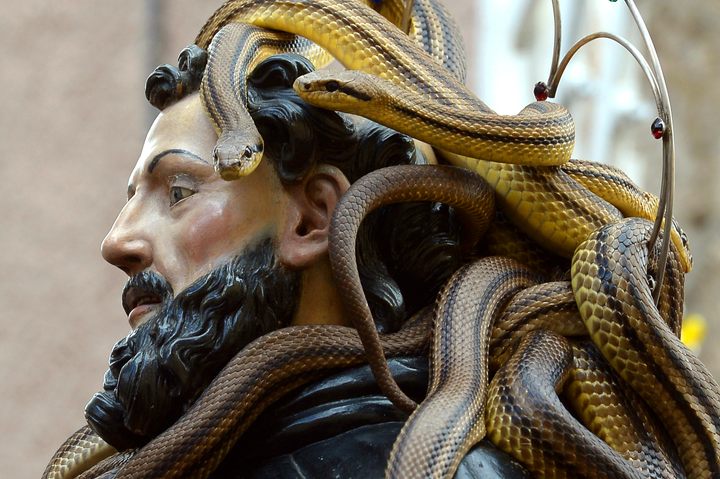
The Italian Town that Welcomes Spring with Live Snakes
It’s a good omen if the reptiles wrap themselves around the head of San Domenico Abate.
Snakes evoke an almost universal awe—a mix of mesmerizing enchantment, visceral repulsion, and morbid fascination. Throughout the millennia cultures have attributed supernatural properties to serpents and devised complex ophidian cults to honor them. There was a time when snake rituals were common across Europe, but now they have mostly disappeared—except once a year in a small town in central Italy. Every May 1st, crowds gather in Cocullo to celebrate the town’s patron saint, San Domenico Abate, a wandering Benedictine monk who traveled across Italy during the 10th century establishing monasteries. As in many other Catholic festivities, a statue of the saint is carried around the town in procession; in Cocullo, though, the statue is fully covered with living snakes.
Preparations for the festivities begin by the end of March, when the snow starts to melt and the serpari—individuals descended from the medieval wanderers and snake-charming ciaralli—go to Mount Catini to catch non-venomous snakes. (They avoid the poisonous vipers that live in the region.) After trapping the wriggling reptiles, they keep them in wooden boxes for about a month, feeding them boiled eggs and living mice.* On the morning of the first day of May, the faithful gather in San Domenico’s chapel and pull the chapel’s bell with their teeth; San Domenico protects against snake bites and rabies, but also against toothaches, and it is believed that the tradition will keep the faithful’s teeth in good health. The serpari wait in the town’s main square where they proudly exhibit the snakes they have captured. Then four porters carry the saint’s statue out of the church, and the living snakes are placed on it. It is considered an omen of good luck for the following year if the snakes curl up around the saint’s head, and of bad luck if the snakes fall off. The mesmerized crowd clamors to touch the statue as the procession goes around the town. At the end of the day, the snakes are released back into nature.

The origins of this springtime ritual are shrouded in mystery. Some historians have connected it with the cult of Hercules, who strangled two snakes in his cradle; others with the pagan cult of the goddess Angizia, a divinity that the ancient Marsi people worshiped as a protector against snake poison. But Lia Giancristofaro, an anthropologist from Università degli Studi Chieti e Pescara who has studied the festivities in Cocullo, rejects these theories as too far removed from the present day. Even if it is likely that in the remote past there was a general ophidian cult on the Mediterranean, she claims that it is impossible to determine if the festivities in Cocullo are a vestige of that, so she proposes a more recent origin for the festival.
“The ciaralli connected with the cult of San Domenico Abate are a product of Christianity,” she explains. This phenomenon “was born during the Middle Ages and is related to the practice of healers in the name of Saint Paul.” The legend tells that Saint Paul survived a snake bite in Malta and created this group of followers who traveled from town to town performing exorcisms and healing people by the saint’s intercession. On May 1st in Cocullo, “contact with the harmless snake enacts a sort of liberation from anguish, because it occurs under the protective shield of San Domenico Abate,” Giancristofaro says. Overcoming the natural fear of touching snakes symbolizes mastering the fear of the natural and supernatural world, of mastering the terror of life’s uncertainties themselves.


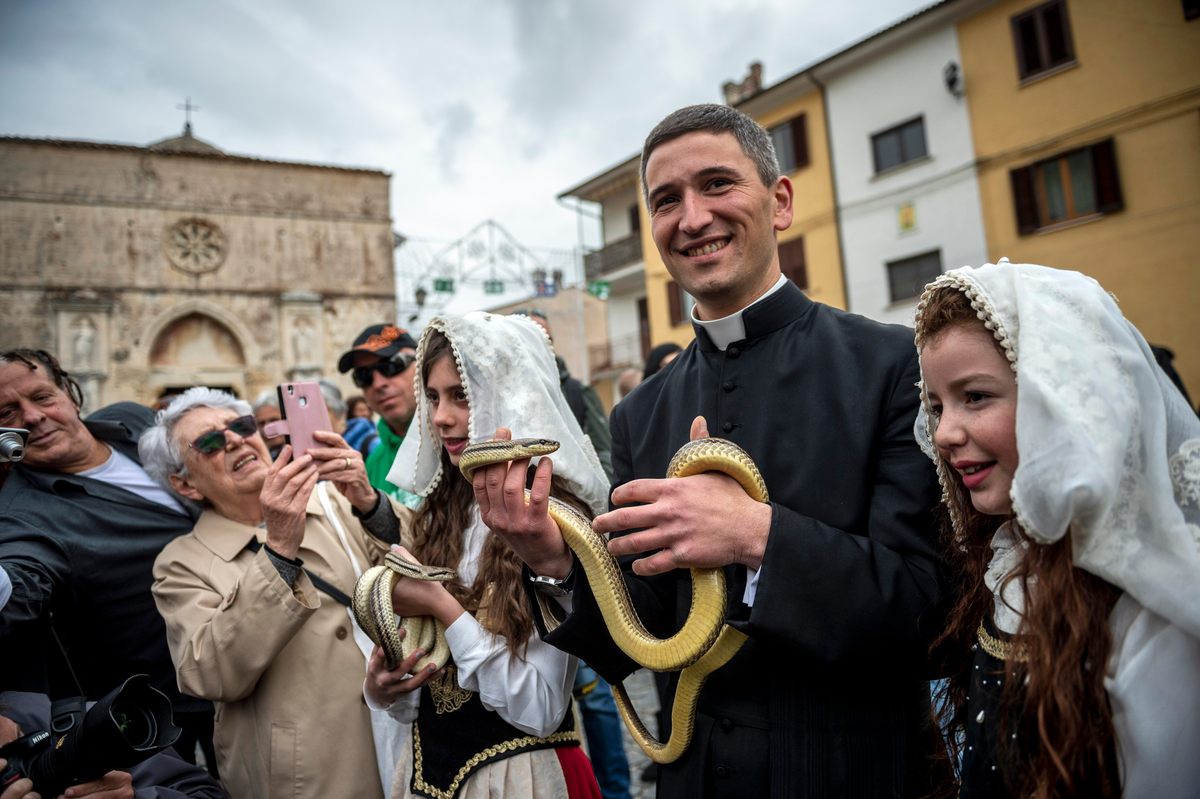


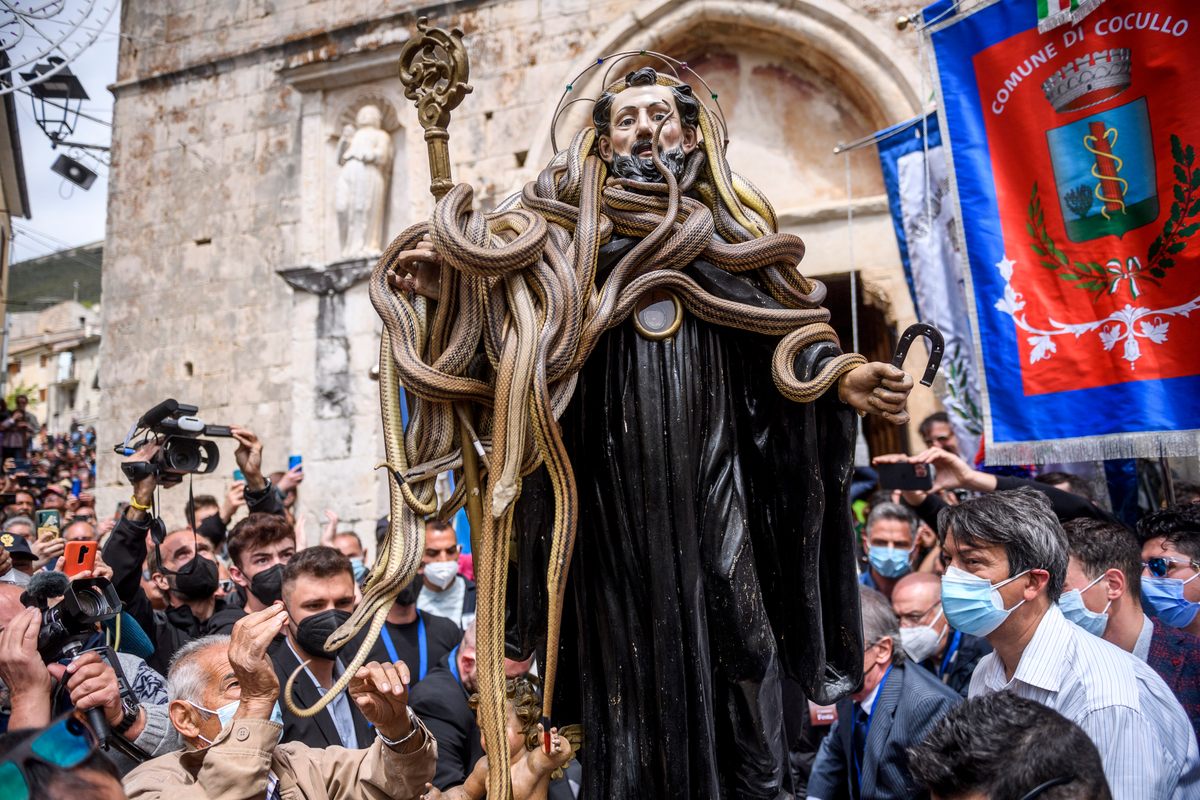

*Correction: A previous version of this story said that the snakes’ teeth are removed before the festivities. Although that was true in the past, it no longer happens.
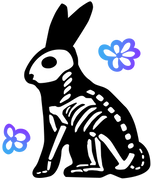
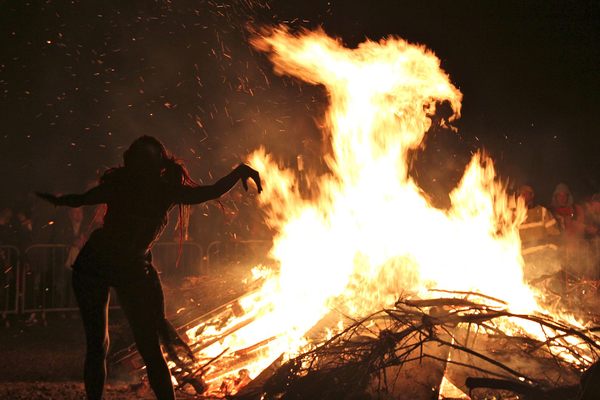
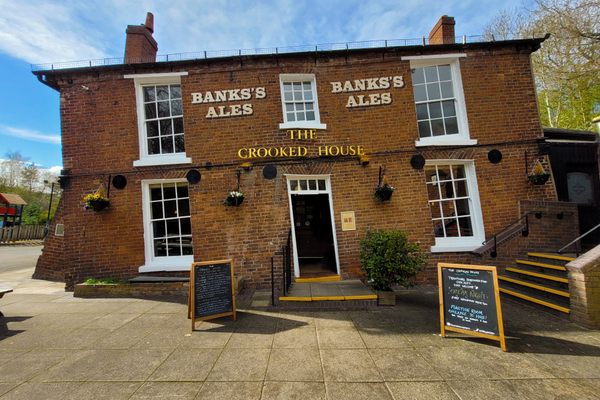
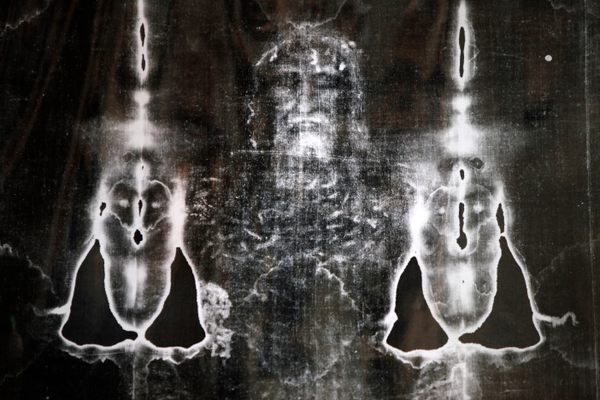
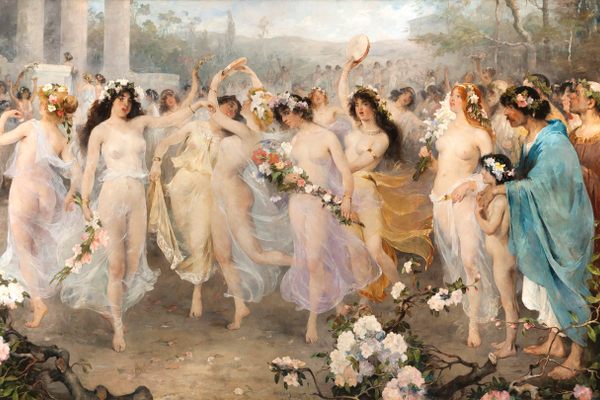





























Follow us on Twitter to get the latest on the world's hidden wonders.
Like us on Facebook to get the latest on the world's hidden wonders.
Follow us on Twitter Like us on Facebook